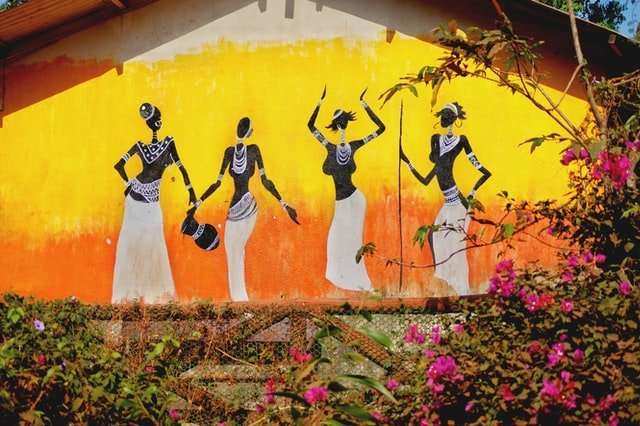My parents taught me this much: anyone can teach, and everyone has something to teach. That we’re all teachers and students is the secret to human advancement; that we’re all learners is the secret to human understanding.
When I was very young my parents said, “Go to school. Learn.” So I went to school—I learned. Then they said, “Go to college. Get a degree.” So I went to college—I got a degree—and then they said, “Go get a master’s.” I got a master’s—they were satisfied—and then they said, “Go get a Ph.D.” And I did; and when I graduated with my Ph.D., they patted me on the head and said, “Good boy!” Then I started teaching, and my father would call the department chair every semester and ask whether his son was doing okay in his classes. And he was.
When my father died he left me his notebooks of notes from college courses he took as an undergraduate in India in the 1930s. They reminded me of what it had been like for me at Reed College: coffee-stained notes taken in lectures that had been given while stoned; questions scribbled on the margins; marginalia written by
“What is your educational background?”
A question to which one might ask in an interview, though the interviewer should expect that the answer would be less than straightforward. I am a teacher, who has taught many different subjects, but only at the level of secondary school. I have also been a student, of life. To that extent I am self-taught.
At the other extreme is a person who is unschooled, who has not had access to education at all, who has learned everything he knows from experience alone. This is a person who can tell you about what it is like to live, because he does so every day, but who cannot give you an answer to any of the questions that can be answered by formal education.
___________
“I do not know how to write,” said my father’s father when asked about his schooling. “I have never written anything except on a slate.” He was born in 1873, and until his death in 1951 lived in constant illiteracy. He had no reason to regret this; he was aware that there were people who could read and write, but he did not feel himself disadvantaged by his lack of these skills. He was a good ambassador for his tribe, and therefore sought out as a political
When Adiwarman Chikkerur, a young artist from the Warli tribe, arrived in Mumbai in 1998, he had never painted before. He had no formal training, no local art scene to draw on for inspiration, no mentors. He was a 26-year-old adivasi from the jungles of rural Maharashtra.
What he did have was a 14-year-old’s determination to make something new. “I wanted to paint my own paintings,” he told me. “I didn’t want to do an imitation of someone else’s work.” A few years later, at the age of 30, he left Mumbai and returned home to depict the Warli view of the world in his own paintings.
The Warli are an indigenous people around whom little has been written. Their mythology is known only through oral tradition; they have no written language and are completely unfamiliar with modern technology. They live in mud huts and subsist primarily on hunting and gathering. Chikkerur himself grew up in a small village surrounded by forests, where he spent most of his time doing what boys everywhere do: making things out of sticks and mud, climbing trees, and playing sports.
“I would collect discarded plastic bottles and other things people threw away
World leaders at the highest pay grade learn and get paid for learning. At the bottom, we learn and teach ourselves.
The artist who made this picture is from a tribe of nomadic hunter-gatherers called the Warlis. Their environment is too dry to sustain agriculture, so they have no tradition of professional artists.
The Warli artist says, “When I was young I could only paint animals. Now I can paint anything.”
In the last forty years, artists in India’s remote tribal areas have been creating a stunning new art form called Warli art.
The Warlis have no word for art, and they have lived in deep isolation for thousands of years. So how did this new art form come about? How is it that tribes with no exposure to the outside world developed such a complex and sophisticated visual language?
Dancers from the remote Adivasi community perform during a festival in Maharashtra. Photograph: Reuters
The answer is that they didn’t. The story of Warli art begins with the Indian artist Jagdish Swaminathan, who was born in Madras (now Chennai) and grew up in Mumbai. In the 1970s he went on a field trip to study folk art in India’s tribal areas. While there he was shown drawings made by children living in a small village near Mumbai. The children were Adivasis, members of one of India’s many tribal groups. They had never taken a drawing class or seen any other artworks; they had never even drawn before.
But their drawings were astonishingly beautiful and complex – a far cry from childlike scribbles. Swaminathan was astonished by their artistic talent and decided to introduce them to formal drawing classes using
The Warli are a tribe of people who live in the Western Ghats, in the state of Maharashtra, India. They know what they’re doing when they make art.
It turns out that their art is difficult to translate into English. The philosopher Nelson Goodman calls it “inverse translation.” It’s not like translating from English to Spanish, where you can expect to understand a sentence after reading it a few times. The Warli are saying something that can’t easily be put into the words of another language. The best translation we’ve got for it is this:
“This story is true, for I myself saw it with my own eyes. I have never heard this story from anyone before, and no one has ever told me this story before.” That’s what art is saying—that’s what all art says—when you get to the heart of it.
Warli painting is a specific style of painting practiced by the Warli tribe of India. The name Warli comes from the old Bombay State, where this tribe was first located, and is also spelled as Varlik.
The Warlis are one of the Scheduled Tribes of India; they live in the forests of Gujarat and have preserved their own traditional style of art. Some art historians have acknowledged its similarity to Western-style graphic arts; it is particularly noted for its depiction of animals and humans, the expression in faces being very distinctive.
According to the World Wildlife Fund report on endangered species, the Warlis are rapidly loosing their traditional way of life, including their paintings. However, they continue to paint on cloth, applying vegetable dyes to their work. In recent times they have begun selling their paintings at high prices to conserve their forest lifestyle and earn money for their families.


